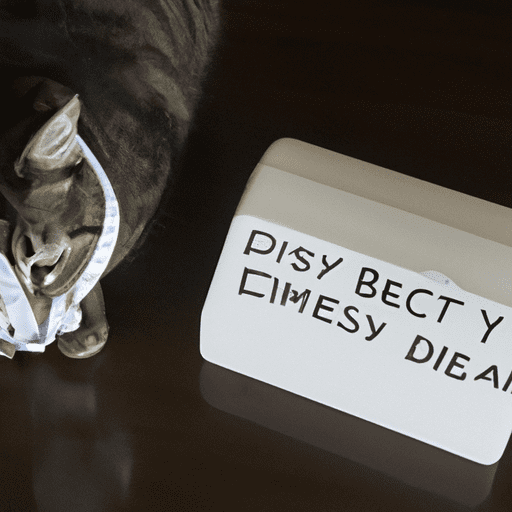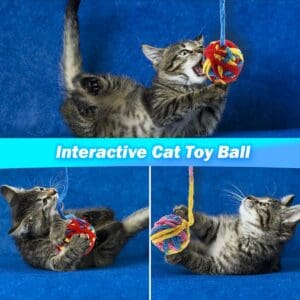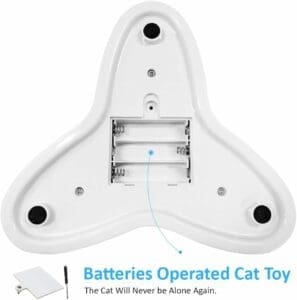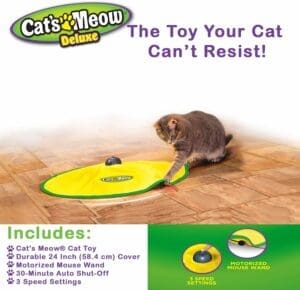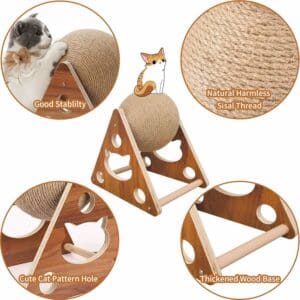Is your furry friend carrying around a few extra pounds? If so, you’re not alone. Cat obesity is a common issue that many pet owners face. But don’t worry, there are ways you can help your kitty shed those unwanted pounds. In this article, we’ll explore some practical tips and strategies to get your cat back to a healthy weight. From creating a balanced diet to incorporating playtime into their daily routine, you’ll discover simple yet effective methods to support your cat’s weight loss journey. So let’s dive in and help your kitty on their path to a happier and healthier life.
Understanding Cat Obesity
Cat obesity is a growing concern among pet owners. Just like humans, cats can also struggle with weight issues that can have negative effects on their health and overall well-being. Understanding the causes of cat obesity and the health risks associated with it is the first step in helping your furry friend achieve a healthier weight.
Causes of Cat Obesity
There are several factors that can contribute to cat obesity. One of the main causes is overfeeding or feeding cats a diet that is high in calories. Many cat owners tend to give their feline companions more food than necessary, leading to excess weight gain over time. Lack of physical activity is another common cause of cat obesity, as indoor cats often don’t get enough exercise. Additionally, certain medical conditions, such as hypothyroidism or diabetes, can also contribute to weight gain in cats.
Health Risks Associated with Cat Obesity
Obesity in cats can lead to a range of health issues that can significantly affect their quality of life. Cats who are overweight or obese are at a higher risk of developing diabetes, heart disease, arthritis, and respiratory problems. Excess weight puts strain on their joints, making it harder for them to move comfortably. Obesity can also lead to a weakened immune system, making cats more prone to infections and other illnesses. It is essential to address cat obesity to prevent these health risks and ensure a longer, happier life for your feline friend.
Identifying if Your Cat is Overweight
Before you can start tackling your cat’s weight issues, it’s crucial to determine whether or not your furry companion is actually overweight. Checking your cat’s ideal weight and assessing their body condition can help you make an accurate assessment.
Checking Your Cat’s Ideal Weight
Every cat is unique, and their ideal weight will depend on factors such as breed, size, and overall body structure. Consulting with your veterinarian is the best way to determine your cat’s ideal weight. They will be able to provide you with specific weight ranges based on your cat’s individual characteristics.
Assessing Your Cat’s Body Condition
In addition to knowing your cat’s ideal weight, assessing their body condition is essential. You can do this by gently feeling their ribs and backbone. In a healthy weight cat, these bones should be easily felt, with a thin layer of fat covering them. If you have difficulty feeling these bones, or if there is a thick layer of fat covering them, your cat is likely overweight.
Using a Body Condition Score Chart
Another method of assessing your cat’s weight is by using a body condition score (BCS) chart. BCS charts use a scale that ranges from 1 to 9, with 1 being underweight and 9 being severely obese. By comparing your cat’s physical appearance to the descriptions on the BCS chart, you can get a better understanding of their weight status and determine if they need to lose weight.
Consulting a Veterinarian
Seeking professional guidance from a veterinarian is crucial when it comes to addressing cat obesity. Your veterinarian will be able to provide the necessary expertise and support throughout the weight loss journey.
Importance of Veterinary Guidance
A veterinarian can play a significant role in helping you manage your cat’s weight. They will conduct a thorough health examination to determine any underlying medical conditions that may be contributing to your cat’s weight gain. Additionally, they can provide personalized advice and recommend appropriate weight loss options based on your cat’s specific needs.
Getting a Thorough Health Examination for Your Cat
A comprehensive health examination will involve assessing your cat’s overall health, including checking for any signs of illness or underlying medical conditions. This will help determine if there are any factors other than diet and exercise that are contributing to your cat’s weight gain. It is important to rule out any medical issues before proceeding with a weight loss plan.
Discussing Weight Loss Options with a Veterinarian
Your veterinarian will work closely with you to develop a safe and controlled weight loss plan for your cat. They will take into account factors like your cat’s current weight, ideal weight, and any medical conditions to create a plan that best suits your cat’s needs. It is crucial to follow their guidance to ensure your cat’s weight loss journey is healthy and successful.
Creating a Safe and Controlled Weight Loss Plan
A safe and controlled weight loss plan is essential to ensure your cat’s well-being throughout the process. Here are some key factors to consider when creating a weight loss plan for your furry friend.
Setting Realistic Weight Loss Goals
It’s important to set achievable weight loss goals for your cat. Rapid weight loss can be harmful, so it’s best to aim for a gradual and steady reduction in weight. Your veterinarian will guide you in setting realistic goals that take into account your cat’s individual needs and help them reach a healthy weight at a safe pace.
Understanding Calorie Requirements
Understanding your cat’s calorie requirements is crucial for effective weight management. Your veterinarian will help you determine the appropriate calorie intake for your cat based on their current weight, ideal weight, age, and activity level. By providing the right balance of calories, you can ensure your cat receives adequate nutrition while still promoting weight loss.
Choosing the Right Type of Cat Food
Selecting the right type of cat food is crucial when it comes to managing your cat’s weight. Look for high-quality, low-calorie cat food options that are specifically formulated for weight loss or weight management. These foods are typically lower in fat and calories but still provide all the necessary nutrients for your cat’s overall health.
Feeding Schedule and Portion Control
Establishing a consistent feeding schedule and practicing portion control are key components of a weight loss plan. Instead of free-feeding, where food is available at all times, divide your cat’s daily food intake into smaller, regular meals. This helps prevent overeating and allows for better portion control. Your veterinarian can guide you in determining the appropriate portion sizes based on your cat’s specific needs.
Promoting Physical Activity
Physical activity is essential for maintaining a healthy weight in cats. Encouraging your cat to engage in regular exercise can help burn calories and increase their overall fitness level.
Encouraging Playtime with Interactive Toys
Playtime is not only fun but also a great way to promote physical activity in cats. Invest in interactive toys that stimulate your cat’s natural instincts and encourage them to chase, pounce, and jump. These toys can provide much-needed exercise while keeping your cat mentally stimulated.
Creating a Stimulating Environment
Creating a stimulating environment for your cat can also encourage physical activity. Provide scratch posts, climbing trees, and other vertical spaces to encourage climbing and jumping. Rotate toys regularly to keep your cat engaged and interested.
Training Your Cat to Exercise
Believe it or not, you can train your cat to exercise! Using positive reinforcement techniques, you can teach your cat to respond to commands that involve physical activity, such as fetching or jumping through hoops. Training sessions not only provide exercise but also mental stimulation for your cat.
Engaging in Interactive Play Sessions
In addition to independent play, make sure to spend quality time engaging in interactive play sessions with your cat. Use toys or laser pointers to encourage them to chase and move around. These sessions will not only provide exercise but also strengthen the bond between you and your cat.
Managing Emotional Eating in Cats
Emotional eating can contribute to weight gain in cats, so it’s important to address any underlying emotional issues and provide appropriate mental stimulation.
Identifying Emotional Triggers
Cats, like humans, can have emotional triggers that lead to overeating. These triggers can include boredom, stress, or anxiety. It’s crucial to identify and address these triggers to prevent emotional eating. If you notice any changes in your cat’s behavior or eating patterns, consult with your veterinarian to determine the best course of action.
Providing Mental Stimulation
Keeping your cat mentally stimulated is essential for their overall well-being. Provide toys, puzzle feeders, or food puzzles that require your cat to work for their food. These activities not only provide mental stimulation but also slow down their eating and prevent overeating.
Avoiding Free Feeding
Free feeding, where food is constantly available, can contribute to emotional eating and overeating. Instead, establish a feeding schedule with set meal times and portion-controlled meals. This helps regulate your cat’s eating habits and prevents them from consuming excess calories throughout the day.
Using Food Puzzles or Slow Feeders
Food puzzles or slow feeders can be valuable tools in managing emotional eating. These devices require your cat to work for their food, slowing down their eating and giving them a mental challenge. This can help prevent overeating and keep your cat entertained.
Modifying Feeding Behavior
Modifying your cat’s feeding behavior is an important part of managing their weight. By making small changes to how you feed your cat, you can promote healthier eating habits.
Avoiding Food Rewards
Many cat owners use food as a reward for their cats, which can contribute to overeating. Instead of using treats as rewards, try using verbal praise, playtime, or non-food rewards to encourage desired behaviors. This helps prevent unnecessary calorie intake and promotes a healthier relationship with food.
Transitioning to Scheduled Meals
Transitioning from free feeding to scheduled meals can help regulate your cat’s eating habits. Divide their daily food portion into two or three meals throughout the day, served at consistent times. This helps prevent overeating and allows for better portion control.
Gradual Reduction of Food Quantity
If your cat needs to lose weight, it’s important to gradually reduce their food quantity. Sudden and drastic changes in their food intake can be stressful and may lead to other behavioral issues. Consult with your veterinarian to determine the appropriate rate of food reduction based on your cat’s specific needs.
Monitoring Food Intake During Weight Loss
Throughout the weight loss process, it’s important to monitor your cat’s food intake. Measure their food portions accurately, and keep track of the amount they consume each day. Regularly consult with your veterinarian to ensure you are on track with the weight loss plan.
Monitoring Progress and Adjusting the Plan
Monitoring your cat’s progress is essential to ensure the weight loss plan is effective. Regular assessments and adjustments may be necessary to achieve the desired results.
Weighing Your Cat Regularly
Regular weigh-ins can help you track your cat’s progress and determine if the weight loss plan is working. Your veterinarian can advise you on how frequently to weigh your cat based on their specific needs. Keep a record of the weights to monitor any trends and adjust the plan accordingly.
Keeping a Weight Loss Journal
Keeping a weight loss journal can be beneficial in tracking your cat’s progress. Record their weight, food intake, and any observations or changes in their behavior. This journal can provide valuable insights and help you identify any patterns or areas that may need adjustment.
Tracking Changes in Body Condition
In addition to tracking weight, it’s important to monitor changes in your cat’s body condition. Regularly assess their body using the BCS chart or by feeling their ribs and backbone. Note any changes in their physical appearance, such as fat loss or muscle tone improvement. These indicators can help you determine if the weight loss plan is effective in achieving a healthy body condition.
Modifying the Plan if Necessary
Weight loss is not always a linear process, and it may be necessary to make adjustments along the way. If your cat’s weight loss progress stalls, or if you notice any negative changes in their overall health, consult with your veterinarian. They can help you modify the plan to ensure continued progress and address any challenges that may arise.
Seeking Support from Other Cat Owners
Embarking on a weight loss journey with your cat can be challenging, but you don’t have to do it alone. Seeking support from other cat owners can provide encouragement, advice, and inspiration along the way.
Joining Online Cat Communities
There are numerous online communities and forums dedicated to cat owners. Joining these communities allows you to connect with other pet owners who may be going through similar experiences. You can share your challenges, successes, and seek guidance from those who have already overcome similar obstacles.
Sharing Experiences and Advice
Interacting with other cat owners and sharing your experiences can be incredibly helpful. You can learn from their successes and failures and gain valuable insights into different weight loss strategies. Remember, every cat is unique, but hearing diverse perspectives can assist you in finding the best approach for your feline friend.
Finding Inspiration and Motivation
Seeing others achieve success in their cat’s weight loss journey can be a great source of inspiration and motivation. Joining online communities provides an opportunity to celebrate others’ achievements and find the encouragement you need to stay committed to your own cat’s weight loss goals.
Preventing Cat Obesity in the Future
After successfully helping your cat shed those extra pounds, it’s essential to establish healthy habits to prevent future weight gain.
Establishing Healthy Feeding Habits
Maintain a consistent feeding schedule, portion control, and avoid free feeding to prevent overeating. Stick to a nutritious and balanced diet that meets your cat’s specific nutritional needs. Avoid relying too heavily on treats or using food as a reward.
Maintaining an Active Lifestyle
Regular physical activity is crucial for maintaining a healthy weight in cats. Continue to engage in daily playtime sessions and encourage exercise through interactive toys and stimulating environments. Make sure your cat has access to scratching posts, climbing trees, and other opportunities for physical activity.
Regular Vet Check-Ups
Regular veterinary check-ups are essential for monitoring your cat’s overall health and weight. Schedule routine visits with your veterinarian to ensure any potential weight problems are detected early on. Your veterinarian will provide guidance on maintaining your cat’s ideal weight and address any concerns or questions you may have.
Helping your cat achieve and maintain a healthy weight is a rewarding journey that requires dedication and commitment. By understanding the causes of cat obesity, identifying if your cat is overweight, consulting a veterinarian, creating a safe and controlled weight loss plan, promoting physical activity, managing emotional eating, modifying feeding behavior, monitoring progress, seeking support from other cat owners, and preventing obesity in the future, you can make a positive impact on your cat’s health and well-being. Remember, your furry friend’s journey to better health starts with your love and care.

